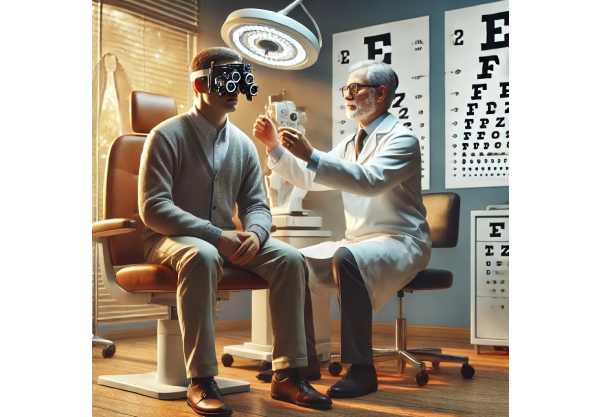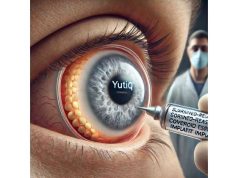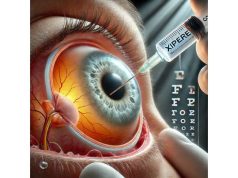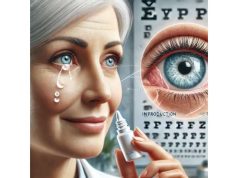
Hypophoria, a subtle but significant form of vertical heterophoria, is a condition in which one eye tends to drift downward compared to the other when binocular vision is interrupted. This often-overlooked eye alignment issue can cause symptoms like eye strain, headaches, visual discomfort, and intermittent double vision—especially during periods of fatigue or prolonged visual tasks. Understanding hypophoria and its comprehensive management is vital for clear, comfortable vision in daily life. In this guide, we’ll demystify the condition, explore both time-tested and modern therapies, and offer practical advice so you can confidently navigate treatment options and emerging innovations for long-term visual well-being.
Table of Contents
- Introduction to Hypophoria and Prevalence
- Non-Surgical Treatment Modalities and Medications
- Operative Interventions and Procedural Advances
- Recent Technological Advances and Innovative Care
- Clinical Trials, Research Updates, and Future Outlook
- Frequently Asked Questions
- Disclaimer
Introduction to Hypophoria and Prevalence
Hypophoria is a type of latent vertical misalignment—meaning the downward drift of one eye is controlled by the brain during normal vision but becomes noticeable when the eyes are dissociated (such as when covering one eye). This distinguishes hypophoria from hypertropia, where the misalignment is manifest even with both eyes open. Hypophoria can be present from childhood or acquired later in life due to neurological, muscular, or systemic conditions.
Key Facts and Definitions
- Latent vertical deviation: Unlike manifest strabismus, hypophoria only appears when fusion is interrupted.
- Symptoms: Eye fatigue, headaches (especially with reading or screens), intermittent double vision, difficulty with depth perception, or an urge to close one eye.
- Associated factors: High visual demands, stress, fatigue, uncorrected refractive error, head trauma, or neurologic conditions.
Prevalence
- Less common than horizontal phorias (exophoria, esophoria).
- Often underdiagnosed, as mild hypophoria may produce subtle or intermittent symptoms.
Impact on Daily Living
- Uncorrected hypophoria can cause chronic eye strain and limit performance at work or school.
- Symptoms may intensify with tasks that require intense focus (reading, computer use, driving).
Risk Groups
- Individuals with a family history of binocular vision issues
- Those with neurological or muscular disorders affecting eye movement
- Post-traumatic or post-surgical patients
Early Recognition Tips
- Pay attention to recurrent headaches, eye discomfort, or blurred vision after visual tasks.
- Children may rub their eyes, squint, or lose place while reading.
Early evaluation and intervention can significantly improve comfort and visual performance for those affected by hypophoria.
Non-Surgical Treatment Modalities and Medications
Effective management of hypophoria often begins with non-surgical strategies designed to reduce symptoms, enhance visual efficiency, and support binocular vision.
Prescription Eyewear and Prisms
- Corrective Lenses:
Addressing any underlying refractive error (nearsightedness, farsightedness, astigmatism) can lessen strain and help the eyes work together. - Prism Glasses:
Prism segments can be incorporated into glasses to shift images and relieve the brain’s need to realign the eyes, reducing double vision and fatigue. - Fresnel Press-on Prisms:
Temporary, adjustable prism stickers allow for customization and adaptation before permanent lenses are prescribed.
Vision Therapy and Orthoptic Exercises
- Office-based Orthoptics:
Trained vision therapists guide patients through exercises to strengthen binocular fusion and improve vertical alignment. - Home Exercise Programs:
Daily routines, such as pencil push-ups or computer-based fusion games, help train the eyes to work in sync.
Pharmacological Aids
- While medications play a limited role in hypophoria itself, managing underlying contributors (like treating associated eye inflammation or dry eye) can support visual comfort.
- In rare cases with muscle spasm or neurologic involvement, medications targeting those issues may be advised.
Lifestyle and Environmental Modifications
- Optimize lighting and reduce glare for visual tasks.
- Take frequent breaks (the 20-20-20 rule: every 20 minutes, look 20 feet away for 20 seconds).
- Use ergonomic workstations to minimize head tilt or poor posture that may worsen symptoms.
Self-Help Tips
- Blink regularly to avoid dry eye.
- Maintain proper reading distance and font size.
- Consider blue light filters or anti-reflective coatings for screens.
Close follow-up and adjustments ensure that treatment is effective and well-tolerated.
Operative Interventions and Procedural Advances
For a minority of patients—particularly those with severe or symptomatic hypophoria not relieved by conservative therapies—surgical intervention may be necessary.
Who Should Consider Surgery?
- Persistent double vision or significant symptoms despite optimal glasses and therapy
- Marked vertical deviation confirmed by measurements
- Acquired hypophoria due to trauma, nerve palsy, or progressive neurologic disease
Common Surgical Approaches
- Vertical Rectus Muscle Surgery:
- Recession (weakening) or resection (strengthening) of the superior or inferior rectus muscles.
- Sometimes combined with horizontal muscle surgery if mixed deviations exist.
- Adjustable Suture Techniques:
- Allow post-op fine-tuning to achieve optimal alignment, particularly valuable for adults.
- Botulinum Toxin Injections:
- Temporary weakening of specific eye muscles in select cases; may be repeated as needed.
Minimally Invasive Innovations
- Microincisional Strabismus Surgery (MISS):
Uses smaller incisions and specialized instruments to reduce recovery time and tissue trauma. - Laser-Assisted Procedures:
Early trials are assessing the use of lasers for minimally invasive muscle modification.
Surgical Recovery Tips
- Wear an eye shield as recommended, especially at night.
- Avoid heavy lifting or vigorous activity for 1–2 weeks post-surgery.
- Use prescribed drops to prevent infection and control inflammation.
- Attend all follow-up appointments for adjustment and monitoring.
Surgical intervention is highly individualized; outcomes are best when patients and surgeons collaborate closely on goals and expectations.
Recent Technological Advances and Innovative Care
The field of binocular vision is rapidly evolving, with new technologies designed to improve both diagnosis and management of hypophoria.
Advanced Diagnostic Tools
- Digital Eye Tracking Systems:
Provide precise measurement of eye movements and phoria, enabling more personalized therapy. - 3D Vision Testing:
Assesses subtle deficits in depth perception and binocular coordination, revealing hidden problems missed by traditional exams.
Innovations in Therapy
- Virtual Reality (VR) Vision Therapy:
VR headsets deliver interactive exercises that can accelerate improvement in fusion and alignment. - AI-Powered Custom Treatment Plans:
Algorithms predict which patients will benefit most from specific therapies or surgical options, improving outcomes.
Wearable Solutions
- Smart Prism Glasses:
Adjust prism strength dynamically based on user activity or time of day. - Telemedicine and Home Monitoring Apps:
Allow patients to report symptoms, track vision changes, and receive feedback without frequent office visits.
Regenerative and Genetic Research
- Early-stage studies are exploring how genetic factors influence vertical phorias and whether targeted therapies might emerge in the future.
Practical Innovation Advice
- Discuss with your eye care team whether you qualify for digital therapy or home monitoring.
- Stay informed about new wearable or app-based technologies that can support ongoing care.
By embracing these advances, patients can achieve better symptom control and more flexible, convenient management.
Clinical Trials, Research Updates, and Future Outlook
Active research is enhancing our understanding of hypophoria and optimizing approaches to therapy and prevention.
Ongoing and Upcoming Clinical Trials
- Comparing Vision Therapy Protocols:
Studies assess which in-office and home-based therapies are most effective for vertical phorias. - Innovative Prismatic Devices:
Trials are evaluating new, lighter, and adaptive prism technologies for both children and adults. - Genetic and Biomarker Studies:
Research is uncovering underlying genetic links that might predispose some individuals to vertical heterophorias.
Emerging Trends in Care
- Personalized therapy regimens based on digital eye-tracking data.
- Development of non-invasive brain stimulation techniques to enhance binocular vision.
- Integration of artificial intelligence for rapid screening and tailored follow-up schedules.
Patient Empowerment and Engagement
- Patient advocacy groups are leading efforts to improve awareness of vertical phorias.
- Educational initiatives help parents, teachers, and employers support individuals with subtle binocular vision challenges.
How to Stay Engaged
- Join newsletters from vision research organizations.
- Ask your eye care provider about clinical trial participation.
- Engage in online communities for shared tips and resources.
The future for hypophoria care is increasingly bright, with individualized options and digital health innovations on the horizon.
Frequently Asked Questions
What is hypophoria and how is it different from hypertropia?
Hypophoria is a latent downward tendency of one eye, noticeable only when fusion is interrupted, while hypertropia is a manifest, always-present vertical misalignment.
What are the most effective treatments for hypophoria?
Most cases improve with prism glasses, vision therapy, and lifestyle modifications. Severe or persistent symptoms may require surgical correction or advanced therapies.
Can children grow out of hypophoria?
Some children may adapt or outgrow mild hypophoria, but regular monitoring and early intervention help prevent eye strain and learning difficulties.
When is surgery considered for hypophoria?
Surgery is reserved for cases with significant symptoms, double vision, or failed conservative management, often after detailed measurement and consultation.
Are digital therapies and VR exercises effective for hypophoria?
Yes, emerging evidence supports the benefit of virtual reality and digital exercises in enhancing binocular vision and reducing symptoms for many patients.
How can I manage eye strain from hypophoria at work or school?
Use proper lighting, take regular breaks, consider prism glasses, and inform teachers or employers so they can provide accommodations if needed.
Disclaimer
This article is for educational purposes only and is not a substitute for professional medical advice, diagnosis, or treatment. Always consult an eye care provider for guidance specific to your situation.
If you found this guide helpful, please share it on Facebook, X (formerly Twitter), or your preferred social media platform. Your support helps us keep creating in-depth, accessible resources for everyone seeking better vision health—thank you!










